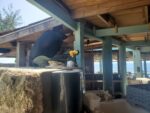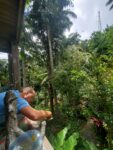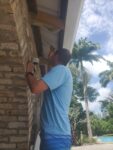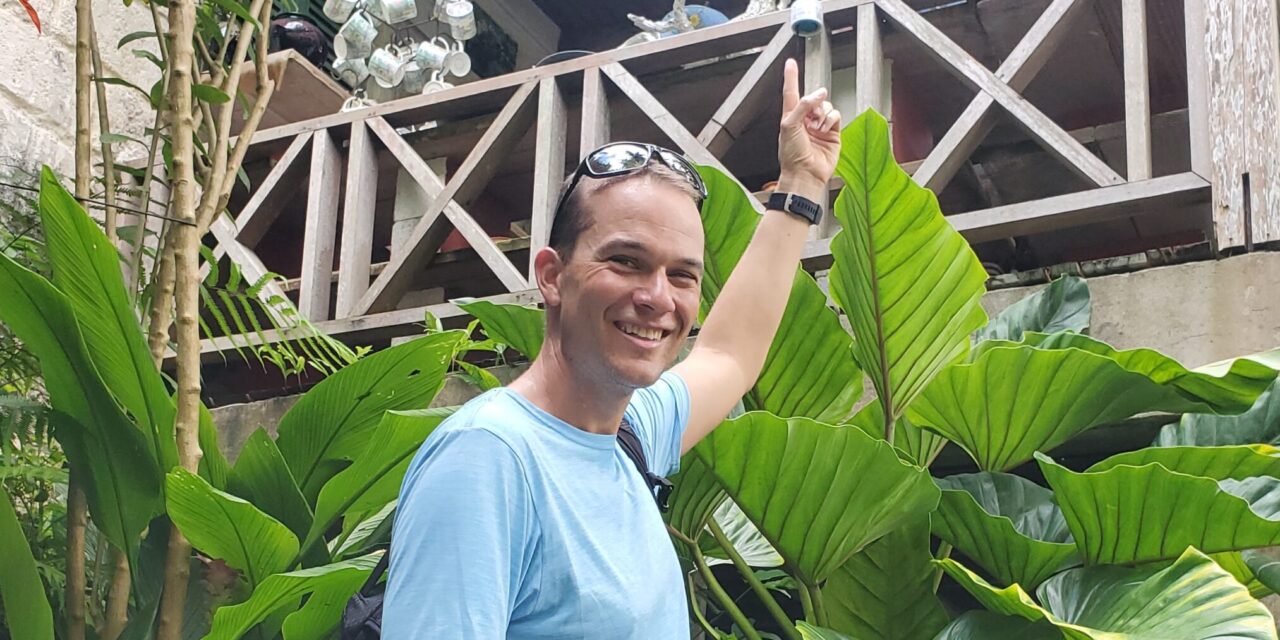 In the spring of 2021, Dr. Tim Hawkins, professor of geography and earth science, went on sabbatical to Barbados through a Fulbright Scholar Award. At that time, he was studying the impact of North Atlantic storms on Caribbean ocean swells. Dr. Hawkins met a lot of great people at the University of the West Indies at Cave Hill and the Caribbean Institute for Meteorology and Hydrology. His collaboration in ’21 led to another idea that he executed this summer.
In the spring of 2021, Dr. Tim Hawkins, professor of geography and earth science, went on sabbatical to Barbados through a Fulbright Scholar Award. At that time, he was studying the impact of North Atlantic storms on Caribbean ocean swells. Dr. Hawkins met a lot of great people at the University of the West Indies at Cave Hill and the Caribbean Institute for Meteorology and Hydrology. His collaboration in ’21 led to another idea that he executed this summer.
On this trip, Dr. Hawkins assessed baseline conditions, spatial variability, and factors that control air quality on the island. Since Barbados is the eastern-most island in the Caribbean, it’s the first to experience dust events from the Sahara Desert in Africa that travel across the Atlantic Ocean. Air quality is degraded due to brush and garbage fires, diesel vehicles and power plant emissions.
“The purpose of the trip was to install the monitors, so we’ve only collected about two months worth of data which makes it hard to say anything definitive yet. However, in watching the real-time data, there have been several moderate African dust events which have caused unhealthy readings on the monitors. There are also some locations that seem to have daily cycles in air quality that likely correspond to traffic and power plant cycles,” said Dr. Hawkins.
Ten PurpleAir monitors were installed in Barbados at low cost to allow for a larger network of sensors. There are air monitors all over the world; Dr. Hawkins even installed monitors on the SU campus and on King Street in Shippensburg.
Initially, the project was going to run through government agencies, but it just wasn’t making progress. Everyone thought it was a good idea but the bureaucratic red tape for getting permission to install was unworkable. So, Dr. Hawkins took matters into his own hands.
“I ended up enlisting friends and friends of friends and friends of friends of friends to develop a set of locations that covered the whole island and accounted for potential air quality pollution hotspots. I also needed electricity access and a solid internet connection to relay the data. Getting all of those stars to align was the most challenging part of the project.” – Dr. Tim Hawkins
The Caribbean islands are relatively understudied in terms of environmental health, and there is little research relating air quality to health data like hospitalizations. As a weather and climate researcher, Hawkins is also very interested in the specific atmospheric conditions that are associated with better or worse air quality. Understanding these relationships can help with forecasting air quality.
 “Air quality is air quality, so results anywhere are relevant to other locations. We have monitors in Shippensburg and I maintain a database of air quality throughout Central PA in a partnerShip with the Central PA Clean Air Board. Students often use the data for projects,” said Hawkins.
“Air quality is air quality, so results anywhere are relevant to other locations. We have monitors in Shippensburg and I maintain a database of air quality throughout Central PA in a partnerShip with the Central PA Clean Air Board. Students often use the data for projects,” said Hawkins.
Simply installing the monitors was a big step forward as residents can view the data in real-time to know the current conditions. Long term, the data may potentially be used to advocate for alternative fuels to be used in vehicles and power plants and to curtail burning as a way to clear land and get rid of trash.




